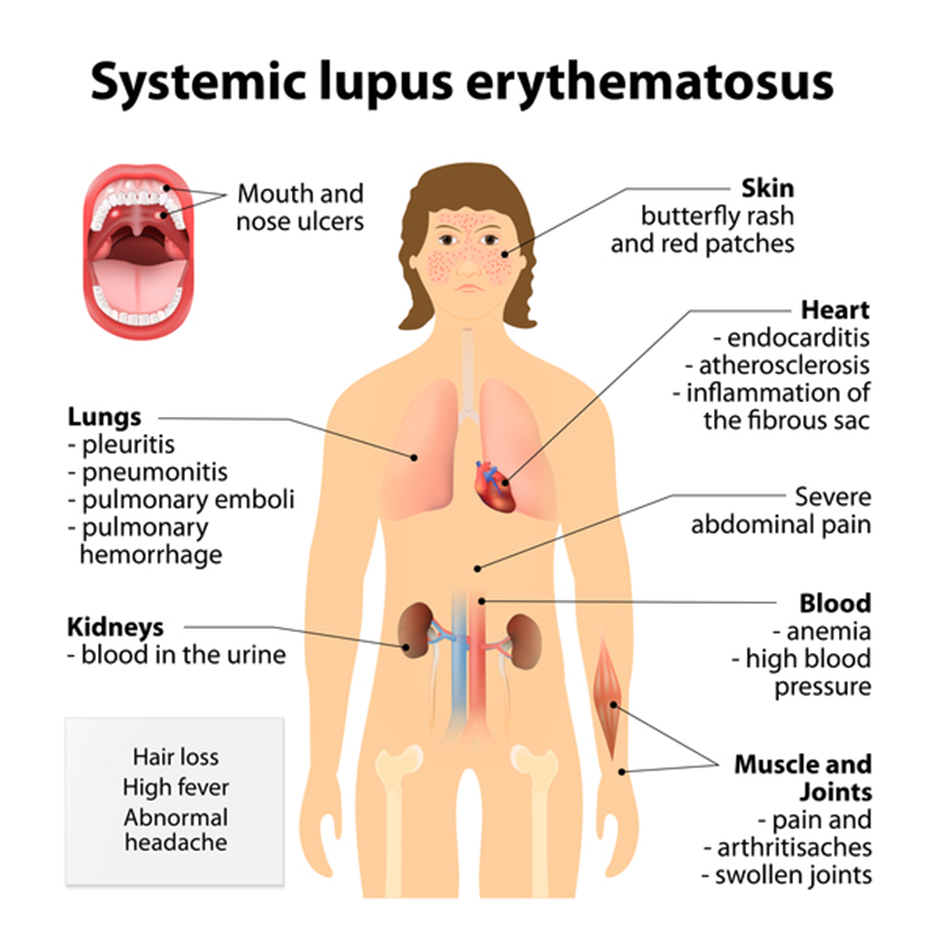A nurse is reinforcing skin care teaching with a client who has systemic lupus erythematosus. Which of the following statements by the client indicates an understanding of the teaching? (Select all that apply.)
"I will apply an SPF 30 sunscreen before gardening."
"I should cleanse reddened areas of my face with an astringent."
"I will gently pat my skin dry after bathing."
"I should apply lotion to my skin twice daily."
Correct Answer : A,C,D
Choice A reason: Applying an SPF 30 sunscreen before gardening is an appropriate statement, as it indicates that the client understands the importance of protecting their skin from sun exposure, which can trigger or worsen lupus flare-ups and cause skin rashes or lesions.
Choice B reason: Cleansing reddened areas of their face with an astringent is not an appropriate statement, as it indicates that the client does not understand that astringents can irritate or dry out their skin and aggravate their condition. The client should use mild soap and water or moisturizing cleanser to wash their face gently.
Choice C reason: Gently patting their skin dry after bathing is an appropriate statement, as it indicates that the client understands how to avoid rubbing or scratching their skin, which can cause injury or infection and delay healing.
Choice D reason: Applying lotion to their skin twice daily is an appropriate statement, as it indicates that the client understands how to keep their skin hydrated and prevent dryness or cracking that can increase their risk of infection or inflammation.
Choice E reason: Limiting time on tanning beds to 10 minutes is not an appropriate statement, as it indicates that the client does not understand that tanning beds emit ultraviolet rays that can harm their skin and worsen their lupus symptoms. The client should avoid tanning beds altogether and wear protective clothing and sunglasses when outdoors.

Nursing Test Bank
Naxlex Comprehensive Predictor Exams
Related Questions
Correct Answer is B
Explanation
Choice A Reason:
The statement “I will wrap the suction catheters in a clean towel to be used again at a later time” is incorrect. Suction catheters should be disposed of after each use to prevent infection. Reusing catheters, even if wrapped in a clean towel, can introduce bacteria into the tracheostomy site, leading to potential infections.
Choice B Reason:
The statement “I will set the suction pressure dial between 80 and 120” is correct. The recommended suction pressure for adults is typically between 80 and 120 mmHg. This range is sufficient to effectively clear secretions without causing trauma to the tracheal mucosa. Setting the suction pressure within this range ensures safe and effective suctioning.
Choice C Reason:
The statement “I will suction for less than 15 seconds while inserting the suction catheter” is incorrect. Suctioning should be performed intermittently and for no longer than 10-15 seconds at a time. However, suctioning should not occur while inserting the catheter. Suction should be applied only while withdrawing the catheter to minimize trauma to the tracheal mucosa.
Choice D Reason:
The statement “I will suction the mouth before inserting the suction catheter into the tracheostomy” is incorrect. Suctioning the mouth before the tracheostomy can introduce oral bacteria into the tracheostomy site, increasing the risk of infection. The correct procedure is to suction the tracheostomy first and then the mouth if needed.
Correct Answer is D
Explanation
Choice A: This is incorrect because weight loss is not the highest priority finding for the nurse to report to the provider. Weight loss can be a common symptom of leukemia due to decreased appetite, increased metabolism, or malabsorption.
Choice B: This is incorrect because fatigue is not the highest priority finding for the nurse to report to the provider. Fatigue can be a common symptom of leukemia due to anemia, infection, or poor nutrition.
Choice C: This is incorrect because dysuria is not the highest priority finding for the nurse to report to the provider. Dysuria can indicate a urinary tract infection, which can be treated with antibiotics and fluids.
Choice D: This is correct because elevated temperature is the highest priority finding for the nurse to report to the provider. Elevated temperature can indicate a serious infection, which can be life-threatening for a client who has leukemia and a compromised immune system.
Whether you are a student looking to ace your exams or a practicing nurse seeking to enhance your expertise , our nursing education contents will empower you with the confidence and competence to make a difference in the lives of patients and become a respected leader in the healthcare field.
Visit Naxlex, invest in your future and unlock endless possibilities with our unparalleled nursing education contents today
Report Wrong Answer on the Current Question
Do you disagree with the answer? If yes, what is your expected answer? Explain.
Kindly be descriptive with the issue you are facing.
